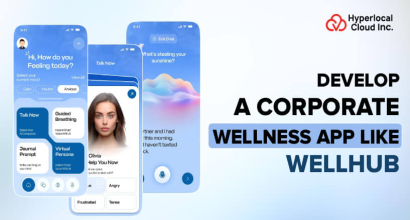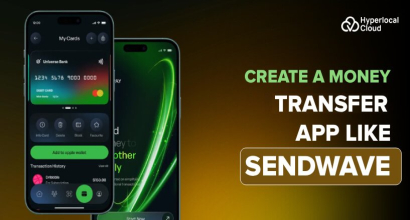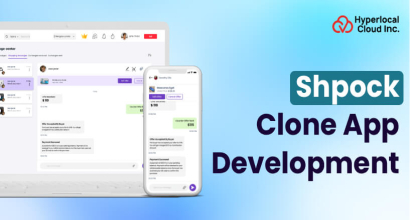Today, with technological advancements, tech giants like ride-sharing companies have created unique services. One such service is carpooling, which provides space for travelers commuting to the same location. This is known as carpooling and is provided by various taxi companies. One such is the Poparide app, which makes traveling much more fun, exciting, and affordable.
Build and launch a spectacular Poparide clone app for your business and gain an edge among your target audience. We will help you develop a fantastic platform embedded with high-end features that are easily navigable by the users and draw phenomenal customer attention.
How Does The Poparide Clone App Work?
The app works differently for passengers and drivers. In the former case, passengers log in with their details, select their destination, and search for a ride. After that, the seat is booked, and debit or credit card payments are made. Conversely, drivers post about their trips by entering the origin and destination. The payments are also received online in advance.
Hire The Best Developers For Your Poparide Clone App Developmentngapp.
Step By Step Poparide Clone App Development Process
Market Research
The first step is to conduct extensive market research on user needs, target demographics, and competitors. Then, analyze ride-sharing platforms already in the market, particularly their features, pricing, and customer feedback. Engage in surveys, interviews, and usability tests to collect insights into pain points and preferences. This step is pivotal for feature prioritization and for better positioning the application in the market.
Requirement Analysis
This stage involves outlining functional and non-functional requirements based on research findings. Define user stories and list the app's key features, such as user registration, ride booking, payment processing, and ratings. Prioritize features for the MVP to validate the concept with minimal resources.
UI/UX Design
For a better user experience, more attention is paid to intuitive navigation and engaging visuals. Moreover, the prototypes' usability is tested, and feedback is gathered to ensure the design meets user needs. The well-thought-out design fosters user retention and satisfaction, playing a key success factor for an app in a competitive market.
Technical Architecture
Define the technical architecture, determining the appropriate technologies and frameworks for the app's backend and front end. This includes determining server infrastructure, database management, and APIs for third-party services, such as payment gateways and maps. The architecture must be scalable enough to handle user growth and secure data.
Development
Agile methodologies are used in this phase, breaking the entire project into sprints and paving the way for flexibility and adaptability. The whole back end and front end are implemented side-by-side. Codes are reviewed and regularly tested so that quality isn't lost over time. Moreover, with continuous integration, updates are pushed forward in time to catch and correct errors once they occur.
Testing
In comprehensive tests, the app must be validated for functionality, usability, and safety. Unit testing, integration testing, and user acceptance testing must eradicate errors with bugs. Utmost performance testing: load handling and response are required to ensure everything goes well as per user anticipation or industry standards before launch.
Deployment
During this phase, all app components must be optimized and ready for user traffic. Whether a soft launch or a full-scale release is chosen, the launch strategy will depend on the test outcomes and the market's readiness.
After that, the app will be deployed on app stores in complete adherence to all guidelines. Monitor the deployment closely if any issues arise post-launch and implement fixes immediately. This step is crucial in creating the app's first presence in the market.
Maintenance & Support
An ideal maintenance plan would include repairing bugs and providing additional features to keep the app fully functional. Users' input and technological changes help create routine app updates that consistently meet customer needs. App maintenance and support are essential in keeping the user satisfied and establishing the app's long-term success in the fluctuating marketplace.
Poparide Clone App: Key Features
Passenger App | Admin Panel | Driver Features |
| User Profile Registration- Passengers can quickly sign up and create profiles with basic information about themselves, such as name, contact details, and payment method. This feature provides a personal experience and enables the user to change account settings so passengers can easily book their rides efficiently. | Dashboard- The intuitive dashboard includes all app performance metrics, such as active users, completed rides, and revenue statistics. It provides the insight necessary for them to observe performance at a glance and intervene to boost operationality by addressing what is causing underperformance. | Driver Registration- Enables signing up and uploading the required documents to verify them. Thus, the service manages the selected drivers based on safety standards. Making the onboard process simple further helps ensure that valid drivers can receive ride requests as soon as possible without compromising passengers' safety. |
| Ride Booking- The passenger can browse for an available ride by entering the pickup and drop-off locations. This option offers real-time choices where users can choose according to availability, fare estimates, and drivers' ratings to provide a hassle-free and customized ride-hailing experience. | User Management- Administrators can see, edit, or even deactivate accounts for passengers and drivers; this enables fast dispute resolution, user authentication, and safe service provision by identifying fraudulent users and eliminating them for a secure environment. | Ride Requests Management- The app sends ride requests to drivers, who accept or decline according to availability. This feature helps drivers control their time and choose rides that suit their schedules, increasing job satisfaction and efficiency. |
| Real-Time Tracking- There is an in-app map view, which passengers can use to see where their assigned driver is. Therefore, they can increase safety and transparency by knowing their arrival time and monitoring their route so users won't feel anxious while waiting for their ride. | Ride Management- Administrators can track all ride requests and their statuses, enabling intervention at the right time. They have real-time ride data, where issues are corrected, and patterns are developed to improve service delivery for passengers and drivers. | Route Optimization- The app offers an integrated navigation system that enables the driver to reach the passenger and his destination efficiently. This system optimizes real-time routes, reducing travel time and fuel costs, allowing drivers to complete rides on time, and maximizing earnings. |
| Payment Integration- Passengers can select their preferred payment options: credit/debit cards, digital wallets, and cash. This feature makes it easier to pay without complications, ensures safe transactions, and gives users the flexibility to choose their preferred method for convenience. | Payment Management- Admins can manage financial transactions, such as fare calculations, commissions, and driver payouts. This feature ensures transparency and accuracy in financial operations. Admins can also generate financial reports to analyze earnings and expenses, facilitating informed financial planning and decision-making. | Earnings Tracker- The app lets drivers view their daily, weekly, and monthly earnings. This is transparent and allows them to see their income earned by finishing rides, increasing their motivation, and aiding in their proper financial planning. |
| Ride History & Invoicing- With this feature, passengers can see their ride history. They'll be able to view information such as the date of the ride, the time the ride started, the starting and destination route, and the fare amount. This has the additional value of an invoice for rides taken over some time; this provides the means of reimbursement. It further facilitates a more transparent process as passengers control their ride expenditure. | Feedback Management- Admin can track and react to user feedback and ratings for drivers and passengers. This feature helps to keep quality service standards high by establishing trends in user satisfaction and reacting to complaints immediately. This promotes a healthy community feeling and ensures users' concerns are met. | Review & Rating System- Drivers can also rate passengers by commenting after every trip. This creates accountability and maintains a respectful community. Ratings also help administrators track user behavior to ensure everybody has a safe and pleasant experience |
Want To Launch Your Own Poparide Clone App For Your Business?ding app.
Benefits of the Poparide App
Developing a carpooling app like Poparide is as essential for passengers and businesses as it is for the earth. It helps lower the carbon footprint, thereby reducing emissions. Specifically, the CO2 emissions are minimized by 50% per passenger mile.
For Businesses
Cost Efficiencies- Saves on running costs because of ride-sharing, reducing empty seats and unused rides.
Revenue Increase- Drivers earn money through this platform as they can cut their ridesharing bills while the company enjoys service charges.
Access to Customers- A simple app reaches far into customers who would also like shared transport as transport needs keep growing.
Environmental Impact- Reducing the number of vehicles on the roads lowers carbon emissions into the atmosphere.
Community Engagement- Encourages a sense of belonging among users, builds brand loyalty, and ensures continued platform use.
For Passengers
Cost-Saving- Passengers may find cheaper rides, lowering travel costs than standard transport methods.
Convenient Access- The ride-sharing application will ensure easy access to ride-sharing availability for any user who can easily acquire a ride that is convenient for his or her schedule.
Vehicle Choice- Rides can be chosen depending on the passenger's choices, ranging from departure time to routes.
Social Experience- Through ride-sharing, one will meet new people and enjoy experiences while traveling.
Safety Features- With driver profiles and user ratings implemented through Poparide and other ride-sharing applications, this ensures passengers' security.
PopaRide Clone App: Top-Tier Revenue Model
Service Charges
For every ride, the drivers are charged a fee percentage based on the cost set by the driver. It could possibly range between 10% and 12%.
In-App Advertisements
The app owner can charge a significant amount for displaying third-party ads on the platform.
Subscription model
Users are charged a certain amount to access exclusive features, which adds to the additional revenue.
Why Is Hyperlocal Best For Your Poparide Clone App Development?
With 4+ years of experience in app development, we have helped various entrepreneurs across the globe fulfill their dreams. Become the trendsetters and be one step ahead of your competitors when delivering outstanding apps.
- Cost Effective
- Rapid Development
- Easy To Customize
- Reduce Risk
- Reliable
- Latest Tech Stacks Integration
- Support & Maintenance



